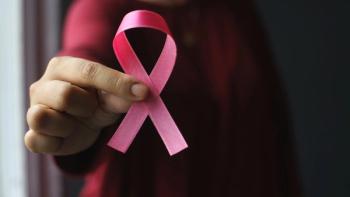
- Spring 2013
- Volume 12
- Issue 1
Can a Human Gene be Patented?
This summer, the Supreme Court is expected to decide a case on whether the BRCA genes can be patented.
This summer, the Supreme Court is expected to decide a case against the U.S. Patent and Trademark Office, Myriad Genetics and the University of Utah Research Foundation, which hold patents on the BRCA1 and BRCA2 genes.
The lawsuit was filed on behalf of researchers, genetic counselors, patients, cancer survivors, breast cancer and women’s health groups, and scientific associations representing 150,000 geneticists, pathologists and laboratory professionals. These groups and individuals charge that patents on human genes violate the First Amendment and patent law because genes are “products of nature” and therefore can’t be patented.
Myriad Genetic contends these genes can be patented because they don’t exist alone in nature when they have been isolated from the DNA.
Because Myriad owns the patent, women undergoing the BRCA 1 and 2 sequencing test must use the company’s BRACAnalysis test. The patent has also limited outside research on the large genomic rearrangements in both BRCA1 and BRCA2, which account for 6 to 10 percent of all hereditary breast and ovarian cancer mutations.
When these rearrangements were discovered, Myriad developed a second test in named BART. In some instances, such as having a strong family history, a diagnosis of ovarian cancer, or breast cancer before age 50, Myriad will include BART in BRACAnalysis for free, but for other women, insurance may not cover the separate BART test, leaving them without the comprehensive findings.
Oral arguments are expected to be presented this spring, with the court’s decision anticipated by June. A finding against Myriad could result in further court cases against other gene patents. Since 1980, the U.S. has issued 3,000 to 5,000 patents on human genes. Myriad’s patents expire in 2015 but could be extended if the court rules in the company’s favor.
Articles in this issue
almost 13 years ago
How Caregivers Adjust to Post-Cancer Lifealmost 13 years ago
HPV-Related Cancers Risingalmost 13 years ago
Planning for an Unpredictable Canceralmost 13 years ago
Pipelinealmost 13 years ago
Research Updatesalmost 13 years ago
Stars Team Up to Help Young Cancer Patientalmost 13 years ago
Tool Helps Users Prepare for End-of-Life Discussionalmost 13 years ago
National Women's Survivors Conventionalmost 13 years ago
Dr. Lacouture's Skin Care Guide for People Living with Cancer



